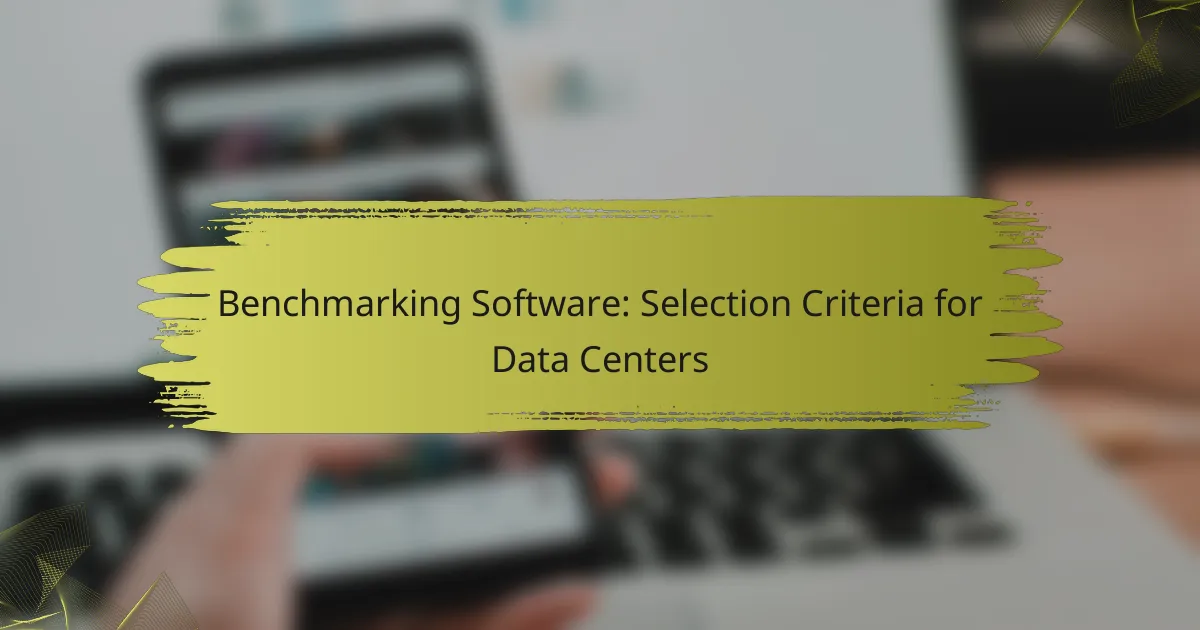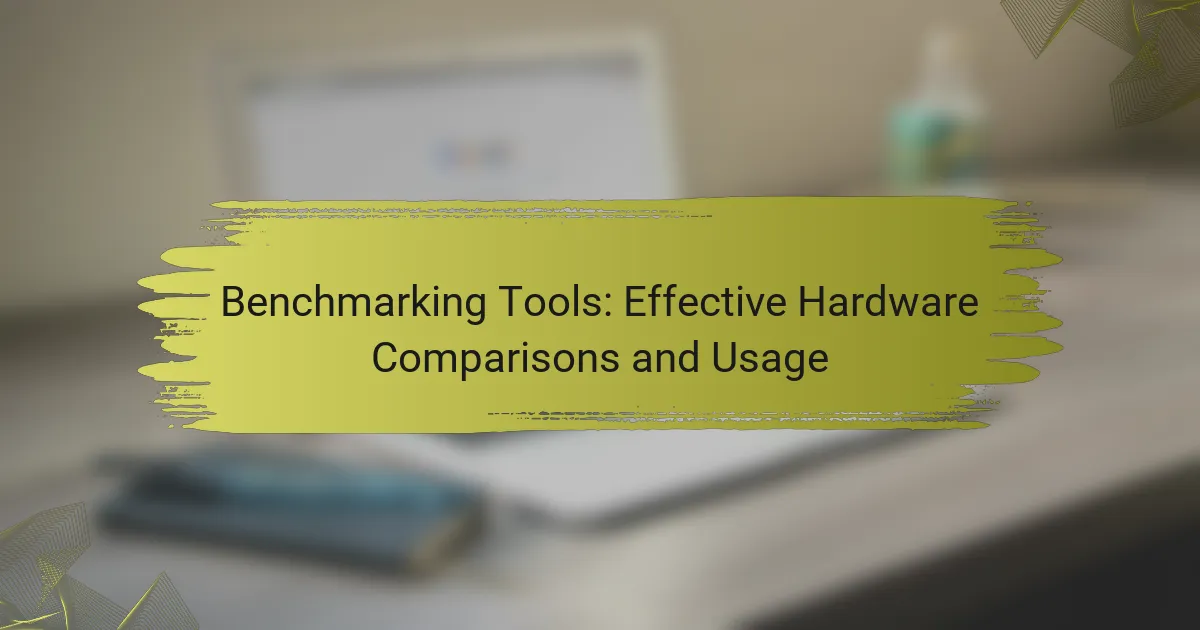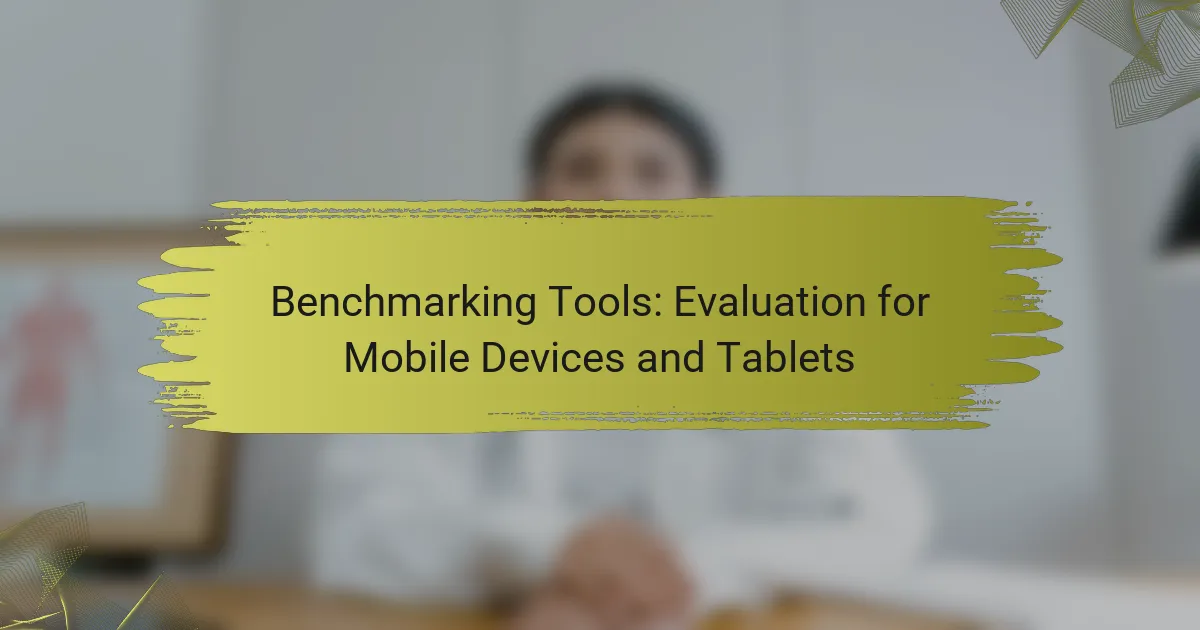Selecting the right benchmarking software for data centers is crucial for optimizing performance and resource utilization. Effective tools not only monitor system health but also help identify bottlenecks, enabling IT teams to enhance operational efficiency. When evaluating options, it’s important to consider factors such as integration capabilities, user-friendliness, and cost-effectiveness to ensure alignment with organizational goals.
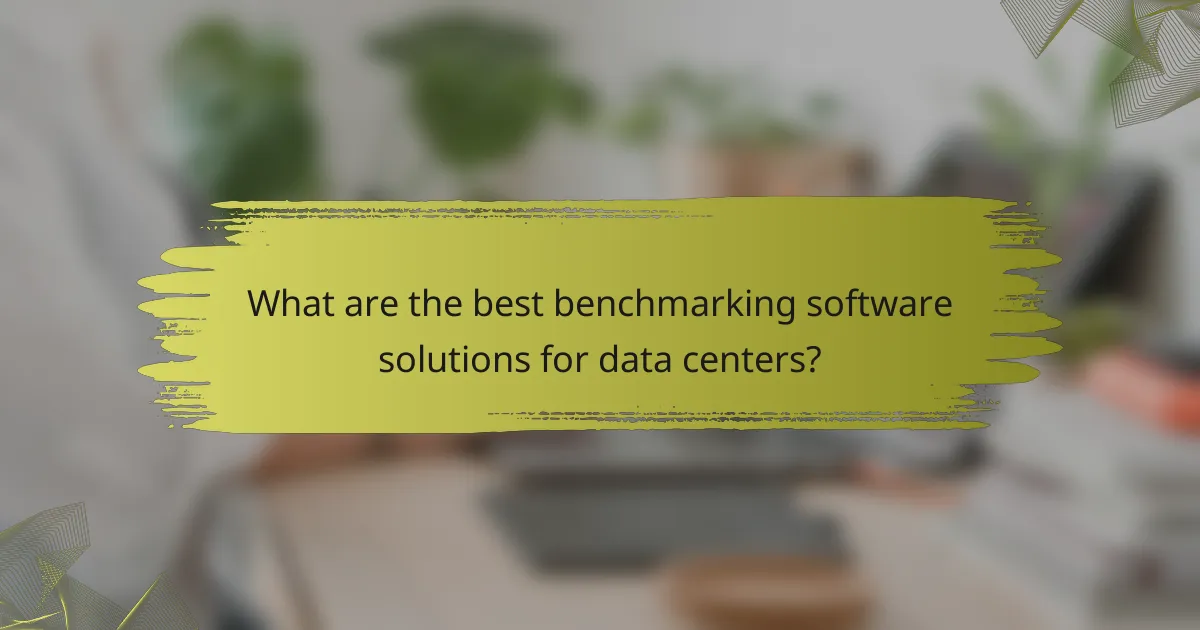
What are the best benchmarking software solutions for data centers?
The best benchmarking software solutions for data centers include tools that effectively monitor performance, resource utilization, and overall system health. These solutions help IT teams identify bottlenecks and optimize operations, ensuring efficient data center management.
SolarWinds Server & Application Monitor
SolarWinds Server & Application Monitor is designed to provide comprehensive monitoring of servers and applications. It offers real-time performance metrics, allowing users to quickly identify issues related to CPU, memory, and disk usage.
This tool is particularly useful for tracking application dependencies and performance across various environments. Its intuitive dashboard and alerting features help IT teams respond proactively to potential problems before they impact users.
Datadog Infrastructure Monitoring
Datadog Infrastructure Monitoring offers a cloud-based solution that provides visibility into the performance of data center resources. It integrates seamlessly with various cloud services and on-premises systems, allowing for a unified view of operations.
With its customizable dashboards and extensive integration options, Datadog enables teams to monitor metrics across multiple platforms. This flexibility is crucial for organizations operating hybrid environments, ensuring they can maintain optimal performance across all systems.
ManageEngine Applications Manager
ManageEngine Applications Manager focuses on monitoring application performance and server health. It provides detailed insights into application response times, transaction tracing, and resource utilization.
This tool is beneficial for identifying slowdowns and performance issues in real-time. Its ability to monitor a wide range of applications, from web servers to databases, makes it a versatile choice for data center management.
LogicMonitor
LogicMonitor is a cloud-based monitoring solution that offers deep visibility into infrastructure performance. It automatically discovers devices and applications, providing a comprehensive view of the data center environment.
Its advanced analytics and reporting features help teams identify trends and potential issues before they escalate. LogicMonitor’s scalability makes it suitable for organizations of various sizes, adapting to growing data center demands.
PRTG Network Monitor
PRTG Network Monitor is a versatile tool that monitors network performance, server health, and application availability. It uses a sensor-based system to track various metrics, providing detailed insights into network traffic and resource usage.
This software is particularly effective for identifying network bottlenecks and ensuring that all components of the data center are functioning optimally. Its user-friendly interface and customizable alerts make it easy for teams to stay informed about their infrastructure’s health.
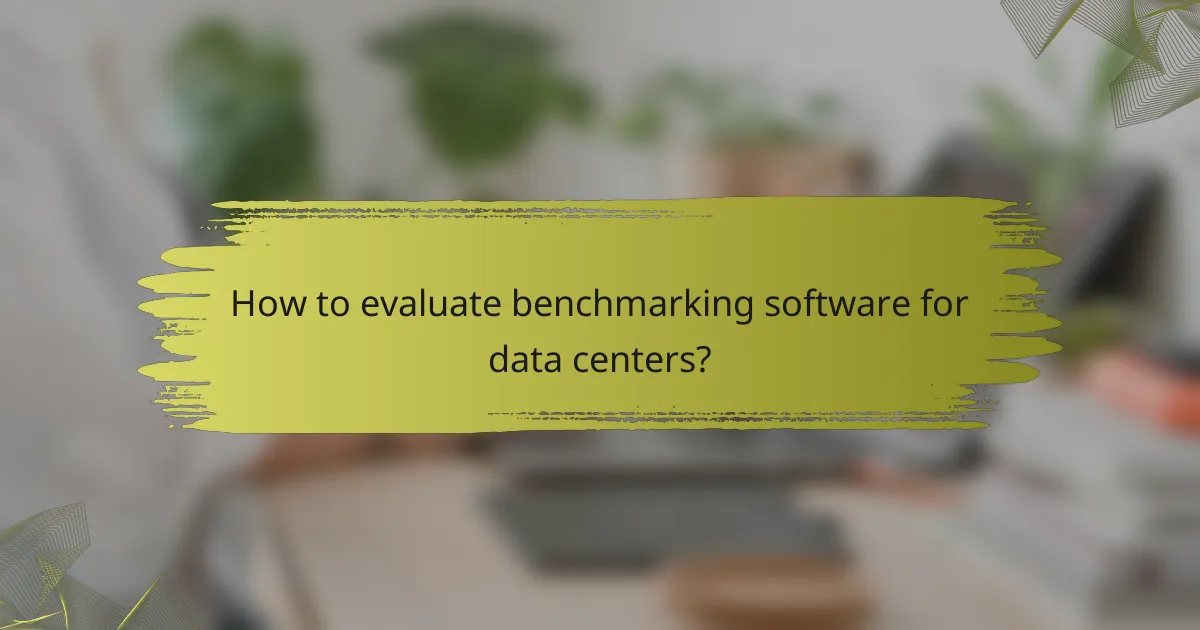
How to evaluate benchmarking software for data centers?
Evaluating benchmarking software for data centers involves assessing its ability to measure performance, integrate with existing systems, provide a user-friendly interface, and offer cost-effective solutions. Prioritizing these criteria ensures that the selected software aligns with operational goals and enhances overall efficiency.
Performance metrics
Performance metrics are crucial for understanding how well a data center operates under various conditions. Look for software that measures key indicators such as CPU utilization, memory usage, network latency, and storage performance. Effective benchmarking tools should provide real-time data and historical comparisons to identify trends and anomalies.
Consider software that aligns with industry standards, such as SPEC or TPC benchmarks, to ensure reliable performance assessments. A good tool will allow you to customize metrics based on specific workloads or applications, enabling more relevant insights.
Integration capabilities
Integration capabilities determine how well the benchmarking software can work with existing infrastructure and tools. Ensure that the software can seamlessly connect with your data center management systems, cloud platforms, and monitoring tools. This interoperability can save time and reduce manual data entry.
Look for APIs or built-in connectors that facilitate data exchange between systems. A software solution that supports popular protocols and formats, such as SNMP or RESTful APIs, will enhance its usability and effectiveness in a diverse environment.
User interface and experience
A user-friendly interface is essential for effective benchmarking software, as it impacts how easily team members can navigate and utilize the tool. Evaluate the software’s dashboard, reporting features, and overall design to ensure it allows for intuitive use and quick access to critical data.
Consider tools that offer customizable dashboards and visualizations, enabling users to focus on the metrics that matter most to them. A well-designed user experience can significantly reduce the learning curve and improve team productivity.
Cost-effectiveness
Cost-effectiveness is a vital consideration when selecting benchmarking software for data centers. Assess the total cost of ownership, including licensing fees, maintenance costs, and any additional expenses for training or support. Compare these costs against the potential benefits, such as improved performance and reduced downtime.
Look for software that offers flexible pricing models, such as subscription-based or pay-per-use options, which can be more manageable for varying budgets. Additionally, consider the return on investment (ROI) by evaluating how the software can enhance operational efficiency and reduce costs in the long run.
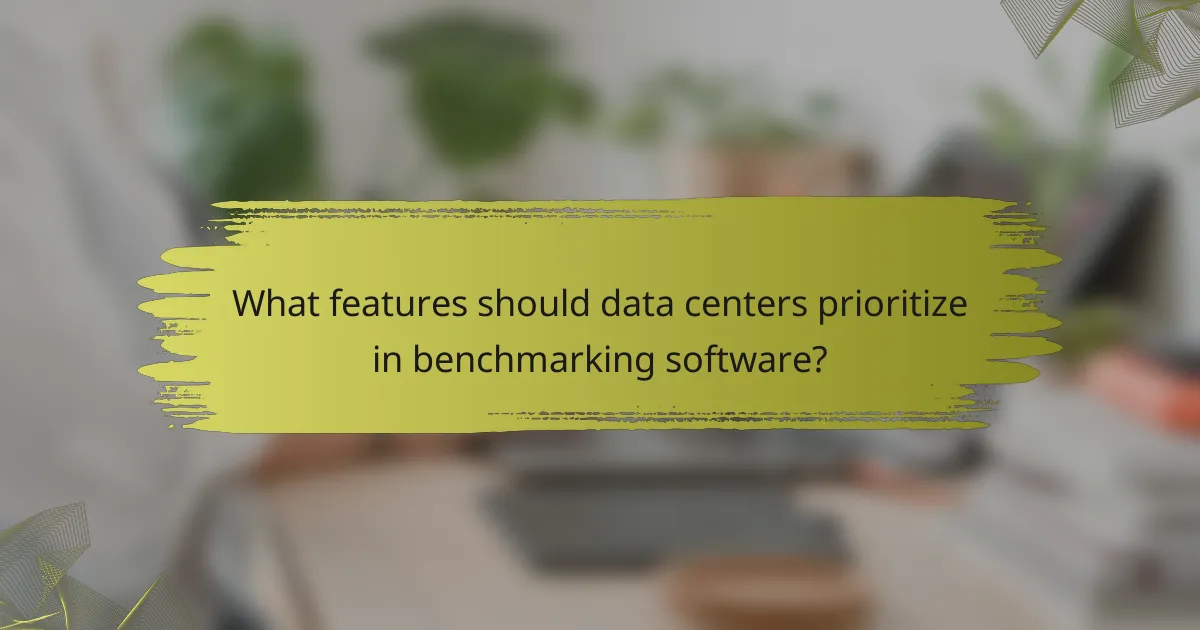
What features should data centers prioritize in benchmarking software?
Data centers should prioritize features that enhance performance visibility, facilitate data analysis, and streamline reporting processes. Key functionalities like real-time monitoring, customizable dashboards, automated reporting, and alerting systems significantly improve operational efficiency and decision-making.
Real-time monitoring
Real-time monitoring allows data centers to track performance metrics continuously, ensuring immediate awareness of system status. This feature is crucial for identifying issues as they arise, minimizing downtime, and optimizing resource allocation. Look for software that provides metrics on CPU usage, memory consumption, and network traffic.
Consider tools that offer visual representations of data, such as graphs and charts, to quickly assess performance trends. This can help in making informed decisions about scaling resources or addressing potential bottlenecks before they impact operations.
Customizable dashboards
Customizable dashboards enable data center managers to tailor the display of key performance indicators (KPIs) according to their specific needs. This flexibility allows users to focus on the most relevant data, enhancing their ability to monitor performance effectively. Choose software that supports drag-and-drop features for easy configuration.
Incorporating widgets for different metrics can help create a comprehensive overview of operations. Ensure that the dashboard can aggregate data from various sources, providing a holistic view of the data center’s performance.
Automated reporting
Automated reporting streamlines the process of generating performance reports, saving time and reducing human error. This feature is essential for maintaining compliance with industry standards and for internal audits. Look for software that allows users to schedule reports at regular intervals, such as daily or weekly.
Reports should be customizable, enabling users to select specific metrics and timeframes. This ensures that stakeholders receive relevant information without unnecessary details, facilitating better decision-making.
Alerting and notifications
Alerting and notification systems are vital for proactive management of data center operations. These features notify administrators of critical issues, such as system failures or performance degradation, allowing for swift intervention. Effective alert systems should offer customizable thresholds for various metrics.
Consider software that supports multiple notification channels, such as email, SMS, or integration with messaging platforms. This ensures that the right personnel are informed promptly, reducing response times and minimizing potential disruptions to service.

What are the key selection criteria for benchmarking software?
When selecting benchmarking software for data centers, key criteria include scalability, vendor support, and compliance with industry standards. These factors ensure that the software can grow with your needs, provide reliable assistance, and meet regulatory requirements.
Scalability
Scalability refers to the software’s ability to handle increasing workloads without performance degradation. It’s crucial to choose benchmarking software that can adapt as your data center grows, whether that means accommodating more servers, increased data traffic, or additional metrics.
Look for solutions that offer modular features, allowing you to add capabilities as needed. For example, software that supports distributed testing can be beneficial for large-scale environments, enabling you to benchmark multiple systems simultaneously.
Vendor support
Vendor support is essential for troubleshooting and optimizing the use of benchmarking software. Reliable support can significantly reduce downtime and improve the efficiency of your benchmarking processes.
Consider vendors that offer comprehensive resources, including documentation, training, and responsive customer service. A good support system can help you quickly resolve issues and maximize the software’s potential.
Compliance with industry standards
Compliance with industry standards ensures that the benchmarking software meets recognized benchmarks for performance and security. This is particularly important in regulated environments where adherence to standards can impact operational integrity.
Check if the software aligns with standards such as ISO/IEC 27001 for information security management or specific benchmarks relevant to your industry. Using compliant software can help mitigate risks and enhance credibility with stakeholders.

What are the common pitfalls in selecting benchmarking software?
Common pitfalls in selecting benchmarking software include neglecting user feedback and failing to consider integration issues. These oversights can lead to poor software performance and increased operational challenges in data centers.
Ignoring user feedback
Ignoring user feedback can result in selecting benchmarking software that does not meet the actual needs of the team. Engaging with current users helps identify strengths and weaknesses, ensuring that the software aligns with practical requirements.
To avoid this pitfall, conduct surveys or interviews with users who have experience with the software. Look for patterns in their feedback regarding usability, features, and performance to make an informed decision.
Overlooking integration issues
Overlooking integration issues can severely hinder the effectiveness of benchmarking software. If the software does not seamlessly integrate with existing systems, it may lead to data silos and inefficient workflows.
Before selecting software, assess its compatibility with current infrastructure and tools. Consider running a pilot program to test integration capabilities and identify potential challenges early in the process.
